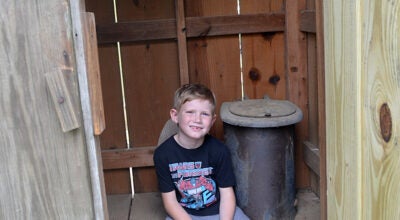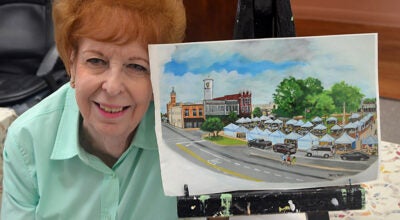Historical society learns about the art of spinning cotton
Published 3:00 am Tuesday, January 31, 2017
Shirley Blankenship made spinning cotton into thread look as easy as falling off a log.
But those who attended Blankenship’s presentation at the Sunday meeting of the Pike County Historical and Genealogical Society realized that spinning is no easy and task.
And, they also quickly realized that, if they had to spin cotton into yarn, and then weave it into cloth, their wardrobes would be very scant.
Blankenship demonstrated the art of spinning cotton to thread on a great wheel.
She turned the wheel with her right hand while the fiber was held in the left hand.
Spinning is the simple act of drawing out a few fibers and twisting them to form a yarn and Blankenship did make it look easy.
She talked as she worked the wheel spinning cotton fibers into yarn much like women worked the wheel during American colonial times.
Spinning wheels are believed to have originated in India between 500 and 1000 AD. By the 13th century they had appeared in Europe and were a standard piece of equipment for making fiber into yard. By the 17th century, spinning wheels were commonly found in homes in the colonies of North America where the production of fabric was a cottage industry.
“Immigrants brought the spinning wheel to America,” Blankenship said. “Spinning was seen as a woman’s job and done in the parlor where the spinning wheel was a standard piece of furniture.
Blankenship said a woman could spin and talk at the same time; therefore the parlor was sometimes called the “gossip parlor” because the woman of the house could enjoy the company of her friends and spin at the same time.
“First, the cotton had to be cleaned and that was time consuming because bits of the cotton plant often clung to the fiber,” she said. “Once the cotton was cleaned, the seeds had to be removed and saved for seed for the next planting season, and that, too, was a time consuming task.”
Cotton seeding parties were regular events among the neighbors.
“All of those who came to the party took off their shoes and packed one shoe with cotton. That was the amount of cotton that person was to seed,” Blankenship said. “A child’s shoe didn’t have as much cotton as a woman’s shoe and a woman’s shoe didn’t have as much cotton at a man’s boot.”
Once seeded, the cotton fibers were placed in a basket to be spun into fiber that would be used to weave the cloth that would be used to make clothing for the family.
Blankenship explained how the yarn was measured into yards – an arms length from the fingertips to the chin — and how the weasel was used to count the yards.
“Because spinning and weaving took a lot of time, very few clothes were made each year,” she said. “Usually, the oldest child got the new clothes. That way the clothes could be handed down.”




